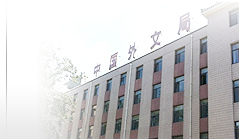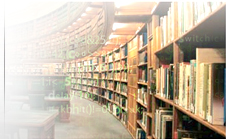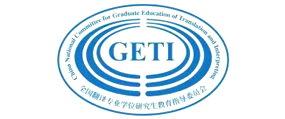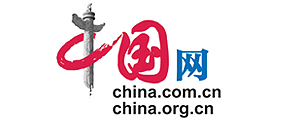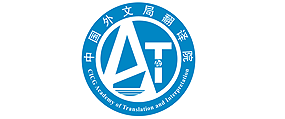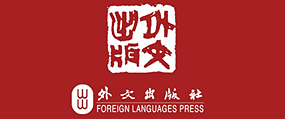目录
理论研究 /
05 翻译批评断代史书写的四个面向 李金树13 语料库口译研究:进展与走向 王克非 符荣波
译史纵横 /
21 再论理雅各之“合儒”与柯大卫之“攻儒”——以《孟子》译本为例 游贤育28 西方《聊斋志异》全译本肇始——意大利儒拉珍本研究 彭倩
译介研究 /
36 《真腊风土记》两百年翻译传播及其世界性意义 侯松45 他者视域下中国文学的谱系构建与翻译选择——20世纪英美五部中国文学史集考察 张丹丹
翻译教学 /
53 “以学为中心”的翻译教师培训模式——基于日内瓦大学会议口译师资培训项目的启示 梁伟玲 穆雷 远程翻译专业教学论坛 /
61 疫情背景下的翻译教学改革与学科创新发展 吴耀武66 远程翻译专业教学管理的创新与发展 刘和平
69 疫情和后疫情时代的口译教学:基于教师视角的案例分析与反思 任文
75 疫情之下的英国利兹大学远程翻译教学管理 王斌华
书刊评介 /
77 作为翻译学理论建构的“译文学”及其侨易学资源——基于《译文学——翻译研究新范型》的考察 叶隽 学术访谈 /
83 精心构筑“经典”的文学翻译家——孙致礼先生翻译《老人与海》访谈录 袁榕 译家研究 /
90 井波律子中国古典文学翻译的守成与创新 宋丹 翻译评论 /
99 鲁迅短篇小说翻译中的社会性特征——评莱尔译《阿Q正传》主体间视域融合 米亚宁 学术视点
107 试论OBE视域下的我国翻译人才培养模式 孙琳 学术争鸣
112 新冠肺炎疫情相关突发公共卫生事件词汇英译浅析 王佩 车云峰 林薇 杨陆 实践探索
119 翻译的构式观——基于构式语法的翻译原则新探 魏在江130 中国武术外译的策略与方法 焦丹
138 “那”文化词汇英译探析 黄玉华
自学之友 /
144 Growing Trade in Green Technology (Excerpt)(Andrea Larson) 周领顺 王志远 译149 翻译内与翻译外:翻译和评价 周领顺
153 我所知道的康桥(徐志摩) 蔡力坚 译
158 中心思想与语境 蔡力坚
词语选译 /
161 习近平2020年9月8日在全国抗击新冠肺炎疫情表彰大会上的讲话(摘译) 第三十二届韩素音国际翻译大赛揭晓 /
164 评审工作报告、评审委员会名单、获奖名单172 英译汉参考译文:审美教育与国家进步
174 英译汉译文评析:“审美教育”与译者的“艺术修养” (傅晓微 执笔)
181 汉译英参考译文:Spring Festival: Chinese Cultural Experience for the World
183 汉译英译文评析:翻译中的文化自觉与语言意识 (李海峰 执笔)
英文摘要
庆祝《中国翻译》创刊40周年贺词集锦
庆祝《中国翻译》创刊40周年贺词集锦
本期论文摘要
理论研究
翻译批评断代史书写的四个面向
李金树 四川外国语大学
李金树 四川外国语大学
摘要:翻译批评史研究是对既往翻译批评活动的描写与阐释,是翻译(史)研究的有机构成部分。中国翻译批评活动源远流长,蕴含着丰富的批评资源。目前,翻译界对翻译批评历史的系统研究或书写还缺乏关注。论文在总结翻译史和翻译批评研究的基础上,提出了以“时代语境、批评主体、批评特征、批评效应”为核心议题的内容框架,初步勾勒了翻译批评断代史书写的路径方法。翻译批评断代史的书写,不仅有助于研究者回到历史现场,为翻译批评的生成寻觅历史的印迹,更有助于拓展翻译批评研究的视阈、丰富翻译批评研究的政治、文化语境,揭示翻译批评的历史本质和现实价值。
关键词:翻译批评;断代史书写;面向中图分类号:H059 文献标识码:A 文章编号:1000-873X (2020) 06-0005-08
语料库口译研究:进展与走向
王克非 北京外国语大学 | 符荣波 北京外国语大学/宁波大学
王克非 北京外国语大学 | 符荣波 北京外国语大学/宁波大学
摘要:语料库口译研究近20年里稳步发展,走过了从借鉴到超越、从单模态到多/跨模态、从纯基础到兼顾应用的探索历程,并逐渐向合作共享的研究模式过渡,成为语料库翻译学新的研究生长点。本文梳理和分析近期相关研究进展,指出未来的走向,即:1)研究对象结合口译交际特点向纵深延伸;2)研究焦点逐步汇聚到口译研究的核心概念、重要理论和重点关切上;3)跨学科性和多维理论视角日渐凸显;4)多语种口译语料库和手语翻译语料库建设持续推进;5)资源整合、团队合作渐成主流,以应用导向的研究成为共识。
关键词:语料库口译研究;方法论;进展;趋势中图分类号:H059 文献标识码:A 文章编号:1000-873X (2020) 06-0013-08
译史纵横
再论理雅各之“合儒”与柯大卫之“攻儒”
——以《孟子》译本为例
游贤育 西南交通大学
——以《孟子》译本为例
游贤育 西南交通大学
摘要:自利玛窦开创文化适应的传教策略以来,西方传教士译者对待中国儒学一直有“攻儒”与“合儒”两种主要倾向。柯大卫和理雅各分别被认为是19世纪新教传教士中“攻儒”与“合儒”的典型代表。前者备受批判而后者备受推崇。理雅各的《中国经典》被学界奉为“标准译本”,至今仍是西方人解读中国文化的重要依据。本文以二者《孟子》译本为核心,同时结合其他相关文献材料,深入探讨传教士译者“攻儒”、“合儒”之本质与异同。
关键词:传教士译者;攻儒;合儒;《孟子》译本中图分类号:H059 文献标识码:A 文章编号:1000-873X (2020) 06-0021-07
西方《聊斋志异》全译本肇始
——意大利儒拉珍本研究
彭倩 南开大学
——意大利儒拉珍本研究
彭倩 南开大学
摘要:1955年,意大利推出《聊斋志异》全译本,这是西方世界的首个全译本。译者卢多维科·尼古拉·迪·儒拉为意大利海军外科医生,他医术精湛,深受皇室贵族与文人墨客所信赖。儒拉精通中国文化,致力于中国典籍的翻译及研究。儒拉全译本以青柯亭为底本,共译出435则故事。采取异化和直译的翻译策略,对中国典籍海外传播作出了开创性贡献,具有极高的学术价值。遗憾的是,国内外学者对儒拉全译本存在目盲,对译本的介绍亦存在诸多谬误。意大利对儒拉全译本重要性的认识同样不够充分,几乎无人意识到这是西方首个全译本。学界对意大利全译本的疏忽与目盲亟待解决,应纠偏正误,正确评价儒拉全译本及意大利聊斋研究对中国典籍外译的贡献,确认并强化儒拉汉学家的身份。
关键词:聊斋志异;意大利;全译本;卢多维科·尼古拉·迪·儒拉中图分类号:H059 文献标识码:A 文章编号:1000-873X (2020) 06-0028 -08
译介研究
《真腊风土记》两百年翻译传播及其世界性意义
侯松 汕头大学
侯松 汕头大学
摘要:元人周达观所著的《真腊风土记》是古代“海上丝绸之路”纪行文献中最具影响力的著作之一,它的海外翻译与传播肇始于1819年的法国,21世纪前后进入高潮,两百年间已有法、英、德、意、日、泰、韩、越南、柬埔寨、西班牙、希伯来等十余种语言、二十多个不同译本。作为文化翻译的《真腊风土记》及其不同语种译本的海外传播具有明显的世界性意义,对不同时代世界的柬埔寨历史认知、跨文化记忆、想象地理以及相关的跨文化实践,如殖民扩张、地区文化交流、遗产旅游等都产生了重要影响。希望本文对《真腊风土记》翻译传播的梳理和世界性意义探讨能为“一带一路”倡议背景下我国古代域外纪行文献的海外译介与跨文化传播研究提供一些借鉴,同时也推动汉籍外译研究议题和空间的进一步拓展。
关键词:《真腊风土记》;翻译;跨文化传播;纪行书写;海上丝绸之路;世界性中图分类号:H059 文献标识码:A 文章编号:1000-873X (2020) 06-0036-09
他者视域下中国文学的谱系构建与翻译选择
——20世纪英美五部中国文学史集考察
张丹丹 齐齐哈尔大学
——20世纪英美五部中国文学史集考察
张丹丹 齐齐哈尔大学
摘要:本文考察了他者视域下20世纪英语世界五部中国文学史集所呈现的中国文学谱系与翻译文本选择演变,发现它们的编纂理念是西方世界时代话语与编者学术视野及偏好博弈的综合体现;随着史集的重写和颠覆,其选材愈加多元,包容性和个性化愈强;史集的经典谱系存在恒常的元素和流变的因素,作品时代越久远,其经典地位越稳固。此外,史集的构建和书写随着时代话语的变迁呈现出不断去历史化、去经典化的现象,读者定位由专业转向大众、专业两宜,其功能除了介绍中国文学外,更重要的是承担构建和更新英语世界的文学文化图景。从他者视角反观史集的构建,对我们当下的文学“走出去”具有重要的启示意义。
关键词:他者;英语世界;中国文学史集;谱系建构;翻译选材中图分类号:H059 文献标识码:A 文章编号:1000-873X (2020) 06-0045-08
翻译教学
“以学为中心”的翻译教师培训模式
——基于日内瓦大学会议口译师资培训项目的启示
梁伟玲 穆雷 广东外语外贸大学
——基于日内瓦大学会议口译师资培训项目的启示
梁伟玲 穆雷 广东外语外贸大学
摘要:本文以日内瓦大学翻译学院会议口译师资培训项目为参照,结合国内现有翻译师资培训经验,从培训理念、培训内容及培训实施三方面分析口译师资培训的项目设计,指出日内瓦大学翻译学院会议口译师资培训模式本质上是“以学为中心”理念下的师资培训,对国内现有口译师资乃至翻译师资培训模式具有借鉴作用,可作为国内现有翻译师资培训模式向纵深、系统方向发展的重要补充。
关键词:以学为中心;师资培训;口译教学中图分类号:H059 文献标识码:A 文章编号:1000-873X (2020) 06-0053-08
远程翻译专业教学论坛
疫情背景下的翻译教学改革与学科创新发展
吴耀武 西安外国语大学
吴耀武 西安外国语大学
摘要:本文以新冠肺炎疫情发生为视角,认为翻译作为沟通中西、整合文明的重要途径其价值日趋凸显,当前,国内翻译专业教学与管理、学科建设与人才培养中存在一些短板,要破解这些问题,务必要创新发展翻译教学管理与学科,同时呼吁翻译学界亟需走协同创新发展之路,以更好地服务国家重大战略实施现实需求。
关键词:新冠肺炎疫情;翻译教学;翻译人才;创新中图分类号:H059 文献标识码:A 文章编号:1000-873X (2020) 06-0061-05
疫情和后疫情时代的口译教学:基于教师视角的案例分析与反思
任文 北京外国语大学
任文 北京外国语大学
摘要:2020年春季学期的全在线教学活动已告一段落,在向后疫情时代过渡的过程中,复盘疫情时期教育教学实践活动以启示未来意义重大。本文以北京外国语大学高级翻译学院的实践类口译课程教学为案例,以学期间高翻同事微信群变身“虚拟教研共同体”的教学研讨内容,以及学期末对学生进行的交传和同传课程问卷调查结果为数据,从教师视角描述教师线上教学态度和能力的变化,以及最终教学效果,并分析原因所在,藉此反思疫情时期的教学对后疫情时代教育教学的五大启示。
关键词:疫情和后疫情时代;线上线下口译教学;教师视角;案例分析;反思中图分类号:H059 文献标识码:A 文章编号:1000-873X (2020) 06-0069-06
书刊评介
作为翻译学理论建构的“译文学”及其侨易学资源
——基于《译文学——翻译研究新范型》的考察
叶隽 同济大学
——基于《译文学——翻译研究新范型》的考察
叶隽 同济大学
摘要:本文以《译文学——翻译研究新范型》一书为中心,对王向远提出的译文学理论进行考察,认为其作为翻译学的一种新理论建构,提出了一系列译文生成、评价和研究的概念,努力经营一个具有个性色彩的关键词结构,值得肯定;另一方面则从理论建构完善的角度,主要从侨易学的视域提出了相关建议,即译文学的研究内容宜更具包容性,译文学的理论建构宜建立在大量具体研究实践的基础之上,译文学宜汲取更多学理资源以展现新兴学域的气象。
关键词:译文学;理论建构;侨易学中图分类号:H059 文献标识码:A 文章编号:1000-873X (2020) 06-0077-06
学术访谈
精心构筑“经典”的文学翻译家
——孙致礼先生翻译《老人与海》访谈录
袁榕 电子科技大学
——孙致礼先生翻译《老人与海》访谈录
袁榕 电子科技大学
摘要:对翻译家及其翻译过程的研究是翻译研究一个重要组成部分。在翻译过程中,翻译家自身的精神主体构成一个完整的系统影响并制约着翻译活动。本文以孙致礼先生的译著《老人与海》为例,以访谈的形式深入探讨文学翻译所涉及的问题。以问题为导向进行翻译研究,有助于拉近翻译理论与翻译实践的距离,使二者高度融合,相互滋养,得出客观、公正的译本评价,进而深化和促进翻译理论研究。
关键词:翻译研究;译者主体性;翻译理论;翻译实践中图分类号:H059 文献标识码:A 文章编号:1000-873X (2020) 06-0083-07
译家研究
井波律子中国古典文学翻译的守成与创新
宋丹 湖南大学
宋丹 湖南大学
摘要:日本当代汉学家井波律子全译了《论语》《世说新语》《三国演义》《水浒传》。本文主要探讨她在翻译上的守成与创新。其学而优则译,崇尚先学,发扬训读、尊重原文、坚守直译,重视副文本与考证的翻译是守成的体现,确保了中国古典文学翻译的学术性;而因文施译、再现诗意、用副文本行使文学批评是其创新之处,揭示了中国古典文学的文学性。这种融合学术性与文学性的翻译模式为中国古典文学在当代日本的有效传播树立了典范。
关键词:井波律子;守成;创新;学术性;文学性中图分类号:H059 文献标识码:A 文章编号:1000-873X (2020) 06-0090-09
翻译评论
鲁迅短篇小说翻译中的社会性特征
——评莱尔译《阿Q正传》主体间视域融合
米亚宁 兰州文理学院/清华大学
——评莱尔译《阿Q正传》主体间视域融合
米亚宁 兰州文理学院/清华大学
摘要:美国本土译者威廉姆·莱尔在其翻译的鲁迅小说译作中,给故事人物注入了反抗意识、生存意识等内容,从而改变了原作中人物性格扭曲的特点,进而改变了原作批判和改造中国民众的奴化性格的社会功能。以其《阿Q正传》译本视域与原文本视域的差异为例,本文发现莱尔翻译鲁迅作品中各主体之间发生了视域融合,主要体现在译者个人视域、作者个人视域、译者所处社会文化视域、原作社会文化视域等之间的视域融合。
关键词:鲁迅小说;莱尔;翻译;社会性;视域融合中图分类号:H059 文献标识码:A 文章编号:1000-873X (2020) 06-099-08
学术视点
试论OBE视域下的我国翻译人才培养模式
孙琳 当代中国与世界研究院
孙琳 当代中国与世界研究院
摘要:翻译行业是全球化产业链的重要一环,具有连接世界、沟通全球的桥梁作用,优质人才则是其高质量发展的坚实基础、不竭动力。为更好提升我国翻译人才队伍建设水平,本文以OBE模式的基本步骤为框架,以历年语言服务行业发展报告数据为依托,梳理基本情况,发现问题不足,并有针对性地提出以复合型人才为目标,优化教学授课,构建评估体系等建议,旨在为探索OBE视域下的我国翻译人才培养模式提供有益借鉴。
关键词:OBE模式;翻译人才;培养对策中图分类号:H059 文献标识码:A 文章编号:1000-873X (2020) 06-0107-05
学术争鸣
新冠肺炎疫情相关突发公共卫生事件词汇英译浅析
王佩 中日友好医院 | 车云峰 林薇 北京外国语大学 | 杨陆 警卫局卫生保健处
王佩 中日友好医院 | 车云峰 林薇 北京外国语大学 | 杨陆 警卫局卫生保健处
摘要:新冠肺炎疫情是新中国成立以来发生的传播速度最快、感染范围最广、防控难度最大的一次重大突发公共卫生事件,广大翻译界同仁在阻击疫情过程中,发挥自身专业优势,担起翻译及语言服务责任,在对外发布信息介绍防控经验方面发挥作用。本文围绕与此次突发重大公共卫生事件相关的一些词汇的英译进行分析讨论,并提出英译建议,希望能对未来进一步做好相关领域的翻译有所帮助。
关键词:突发公共卫生事件;方舱医院;应急医院;应急救治能力;流行病学史;汉译英中图分类号:H059 文献标识码:A 文章编号:1000-873X (2020) 06-0112-07
实践探索
翻译的构式观
——基于构式语法的翻译原则新探
魏在江 广东外语外贸大学
——基于构式语法的翻译原则新探
魏在江 广东外语外贸大学
摘要:在认知翻译学日渐兴起的今天,基于认知科学的翻译研究越来越受到学界重视,相比之下,基于构式语法的翻译研究还不多见。本文以构式语法的基本要点为出发点,提出了整体原则、凸显原则、互动原则、多义性原则四条翻译原则和方法,并结合翻译实例,论证了构式语法对翻译的理论指导作用,期望为翻译理论与实践研究提供新的启示。
关键词:构式语法;翻译;翻译原则中图分类号:H059 文献标识码:A 文章编号:1000-873X (2020) 06-0119-011
中国武术外译的策略与方法
焦丹 河南工业大学
焦丹 河南工业大学
摘要:2018年《中国话语海外认知度调研报告》显示,“武术”是英语圈国家主流英文媒体和民众认知度的高频关键词,中国武术对于中国传统文化的对外传播贡献有目共睹。然而,从译学理论与翻译实践角度,中国武术外译传播仍显现译介质量良莠不齐、缺乏统一翻译标准规范、策略与方法应用不当等问题与症结。基于此,本文以中国武术外译场域、语料和思想三个基本形态特征为视角,从武术英译“归化+异化的释译求‘合’”“直译+意译的全译求‘化’”“形意+神意的变译求‘似’”三个维度进行翻译策略与方法的归纳剖析,探索武术英译“合而不同”“整体化境”“形神变通”的实践路径和实现效果,通过多元翻译策略与方法将武术文化内涵和庞杂术语外译于目的语受众,旨在为中国武术对外传播和中国文化外译提供参考与借鉴。
关键词:中国武术;武术英译;外译特征;翻译策略与方法中图分类号:H059 文献标识码:A 文章编号:1000-873X (2020) 06-0130-08
“那”文化词汇英译探析
黄玉华 广西财经学院
黄玉华 广西财经学院
摘要:“那”文化是我国民族文化的一个重要分支,也是中国与东南亚各国共同拥有的三大文化之一,其英译研究具有重要的意义。本文剖析了“那”文化的词汇特色,研究其词汇分类,然后从音译、直译、加注、意译等角度探讨“那”文化词汇英译策略,以期为“那”文化的对外交流与传播提供一定的参考,推动我国“那”文化走向世界。
关键词:“那”文化;词汇;英译;策略中图分类号:H059 文献标识码:A 文章编号:1000-873X (2020) 06-0138-06
本期主要论文英文摘要
(英文摘要修订:刘亚猛)
(英文摘要修订:刘亚猛)
A Four-dimensional Approach to Writing a Period-specif ic History of Translation Criticism
By LI Jinshu (Sichuan International Studies University, Chongqing, China) p.5
By LI Jinshu (Sichuan International Studies University, Chongqing, China) p.5
Abstract: To historicize the practice of translation criticism in a certain period is to describe and interpret the translation-specif ic critical activities taking place during the said period. In that sense, the interpretive accounts of translation criticism add to our understanding of translation history and are an integral part of translation studies in general. China enjoys a long history of translation criticism and is rich with translation-related critical resources. Little attention, however, has been paid so far to mobilizing these resources by making systematic efforts to write the country’s history of translation criticism. To f ill such a gap, this paper proposes a four-dimensional approach to writing period-specif ic history of translation criticism, focusing attention on the categories of historical contexts, critical subject, critical features and critical effects. Such an approach enables the researchers to revisit specif ic historical sites so that they may come up with better accounts of the origination of translation-oriented critical practices. It also promises to broaden the f ield of translation criticism in general, enriching its political and cultural contexts while uncovering the patterns of historical development as well as the underlying values with which such development was motivated.
Keywords: translation criticism; writing of history; historical period; dimension
Corpus-based Interpreting Studies: A Methodological Review and Preview
By WANG Kefei (Beijing Foreign Studies University, Beijing, China) & FU Rongbo (Beijing Foreign Studies University, Beijing, China / Ningbo University, Ningbo, China) p.13
By WANG Kefei (Beijing Foreign Studies University, Beijing, China) & FU Rongbo (Beijing Foreign Studies University, Beijing, China / Ningbo University, Ningbo, China) p.13
Abstract: The past two decades have witnessed a steady development of Corpus-based Interpreting Studies (CIS), its transition from modelling on to transcending over Corpus-based Translation Studies (CTS), from being mono-modal to becoming multi/cross-modal, from DIY to collaboration in research work. As a result, it is growing into a full-bloomed new frontier of CTS. On the basis of a detailed analysis of recent advances in CIS, this paper identif ies the following tendencies regarding its future development: F irst, an expanded research scope that takes in topics associated with specif icities of interpreting as an immediate oral form of translation; second, a shift of research foci to essential concepts, theories and ideas in interpreting studies; third, a rise in multi- and inter-disciplinary perspectives; fourth, further development of multilingual and sign-language interpreting corpora; f ifth, collaborative research driven by data sharing and an applied orientation.
Keywords: corpus-based interpreting studies; methodology; present; prospects
James Legge’s Adoption versus David Collie’s Rejection of Confucianism: A Case Study of Two English Versions of Mencius
By YOU Xianyu (Southwest Jiaotong University, Chengdu, China) p.21
Abstract: Since Matteo Ricci initiated the acculturating strategy for preaching Christianity in China, western missionaries-cum-translators have shown two conflicting inclinations toward Confucianism: either they “adopt” the traditional Chinese doctrine or they reject it, with the former represented in the 19th century by James Legge and the latter by David Collie during the same period. While Collie’s stance has met with much criticism, Legge’s approach has been praised in general, with his English translations collected in The Chinese Classics still considered “standard versions” and serving as important sources of Westerners’ knowledge of Chinese culture. This paper takes a close look at the two versions of Mencius offered by Legge and Collie respectively, taking into consideration some other relevant materials as well, in an investigation into the essence, the differences and the similarities between protestant missionary translators’ two opposing attitudes toward Confucianism.
Keywords: missionary translator; Confucianism; rejection; adoption; Mencius; English translation
The Travel of a Yuan-Chinese Travelogue: Zhenla Fengtu Ji as a Work in World Translations with Notable Cosmopolitan Signif icance
By HOU Song (Shantou University, Shantou, China) p.36
By HOU Song (Shantou University, Shantou, China) p.36
Abstract: Zhenla Fengtu Ji (The Customs of Cambodia), by the Yuan Chinese scholar Zhou Daguan, is an overseas travelogue of cosmopolitan signif icance ever to come out of the ancient “maritime silk route.” Its translation and travel around the world did not start until a French version was published in 1819, and its worldwide distribution and circulation peaked only around the turn of the 21st century, when it was turned into about a dozen languages, with over thirty versions simultaneously in circulation. Both this travelogue itself as a cultural translation and its subsequent renditions into other languages are rich in cosmopolitan meanings and cross-cultural implications. They work to shape the world’s historical knowledge, transcultural memory and imagined geography about Cambodia, offering textual records of the intercultural practices in which this ancient country was engaged, such as colonialization, regional cultural exchanges and heritage tourism. The revelation of these signif icances is expected to add to the translation and intercultural studies of Chinese historical writings about overseas travelling, and to the studies of world translations of Chinese historical books as well.
Keywords: Zhenla Fengtu Ji (The Customs of Cambodia); translation; intercultural communication; travel writing; Maritime Silk Route; cosmopolitan signif icance
The Construal and Translation of Chinese Literature by the Other: A Survey of F ive Relevant Histories/Anothologies Published in 20th Century English-speaking World
By ZHANG Dandan (Qiqihar University, Qiqihar, China) p.45
By ZHANG Dandan (Qiqihar University, Qiqihar, China) p.45
Abstract: This paper sets out to examine the canonization of Chinese literary works presented in f ive relevant histories/anthologies published in the 20th century English-speaking world, and to trace the evolution in their selections of texts. The survey f inds: 1) the criteria adopted in these publications represent a compromise between literary standards upheld by the mainstream discourse, the dominant academic perspectives, and the editors’ personal inclinations as well; 2) with the rewriting and revision each publication features, the histories/anthologies tend to become more pluralistic, inclusive and personalized in their selection of texts; 3) their different ways to canonize the selected Chinese literary works show both continuation and change: the more distant past the classics were situated in, the more stable their status tends to become. Furthermore, these histories’/anthologies’ target readership tends to shift from the academics to the reading public, as a result of their adaptation to the change of time and mainstream discourse. In addition to introducing Chinese literature to their readers, these histories/anthologies serve also the purpose of helping to construct the “world literature” from the English-speaking world’s point of view. As such, an investigation into these histories/anthologies would be conducive to the “Chinese literature going out” endeavor.
Keywords: the Other; the English-speaking world; history/anthology of Chinese literature; canonization; translation selection
Learning from University of Geneva’s Learning-centered Training Model for Translation and Interpreting
By LIANG Weiling & MU Lei (Guangdong University of Foreign Studies, Guangzhou, China) p.53
By LIANG Weiling & MU Lei (Guangdong University of Foreign Studies, Guangzhou, China) p.53
Abstract: The training model offered by University of Geneva’s Conference Interpreting Teacher Training Program adopts a uniquely learning-centered approach and is designed as a TOT model. Summarizing its content design and training implementation, this paper argues that valuable insights can be derived from such a model for expediting the efforts to expand and re-structure current training programs for interpreting and translation teachers in China.
Keywords: learning-centered; faculty training; interpreting training; TOT
Conservation and Innovation in Ritsuko Inami’s Japanese Translation of Chinese Classics
By SONG Dan (Hunan University, Changsha, China) p.90
By SONG Dan (Hunan University, Changsha, China) p.90
Abstract: Japanese sinologist Ritsuko Inami has personally translated a whole range of Chinese classics, including The Analects, A New Account of Tales of the World, Romance of the Three Kingdoms, and The Water Margin. This study calls attention to the two opposite but complementary tendencies on her part to conserve and to innovate in these translations. Her tendency toward conservation f inds expression in, among other things, the importance she attaches to a thorough pre-translation investigation into the source text and its paratexts, the close attention she pays to the exegetical tradition of the text’s criticism, her option for literal translation where possible, and her abundant use of Kundoku. All these efforts have endowed her translations with a distinctive academic flavor and texture. Her effort to innovate in these translations, on the other hand, is reflected in the generic framework she constructs for her renditions, her reproduction of the poetic dimension of the source text, as well as her use of paratexts as a device for commenting on the translation itself. All these add to the literariness of Chinese classics. Due to her careful balancing of the academic dimension against the literary trait, Inami’ translation has become a model for effective dissemination of Chinese classics in contemporary Japan.
Keywords: Ritsuko Inami; conservation; innovation; academic nature; literariness
The Fusion of the Subjects’ Horizons and the Change of Social Functions in Lyell’s Translation of The True Story of Ah Q
By MI Yaning (Lanzhou University of Arts and Science, Lanzhou, China / Tsinghua University, Beijing, China ) p.99
By MI Yaning (Lanzhou University of Arts and Science, Lanzhou, China / Tsinghua University, Beijing, China ) p.99
Abstract: In his rendition of Lu Xun’s short stories, American translator William A. Lyell infuses a consciousness of rebellion and a sense of existential awareness to the f ictional heroes, thus introduces signif icant changes to the personality-skewed characters of Lu Xun’s original f iction, and to its social functions of critiquing and reforming the defected Chinese national character as well. And in one particular case, i.e., his translation of Lu Xun’s masterpiece The True Story of Ah Q (Ah Q Zheng Zhuan), these changes have resulted in fusing the horizons of the source text with the target text, or in fusing the horizons of the multiple subjects involved in the discourse of the translation, including the translator, the author, the original culture and the culture of the translated text.
Keywords: Lu Xun’s short stories; William A. Lyell; Translation: social function; fusion of horizons
Construction Grammar-based Principles of Translation
By WEI Zaijiang (Guangdong University of Foreign Studies, Guangzhou, China) p.119
By WEI Zaijiang (Guangdong University of Foreign Studies, Guangzhou, China) p.119
Abstract: Whereas cognitive science-inspired translation studies in general has gained much attention over the past years, approaches specif ically rooted in construction grammar remains relatively obscure for practitioners of this f ield. Following an in-depth review of the basic ideas of construction grammar, this paper proposes four translation-applicable principles, i.e., the principle of totality, of prominence, of interactivity, and of constructional polysemy. These principles are further tested with practical examples, and the results clearly establish construction grammar as a source of theoretical inspirations for translation studies.
Keywords: cognitive science; construction grammar; translation; translation principle

